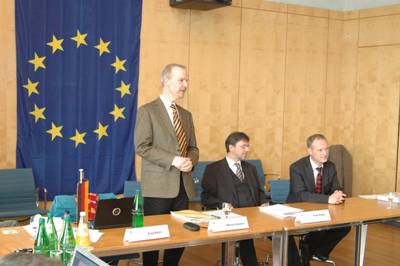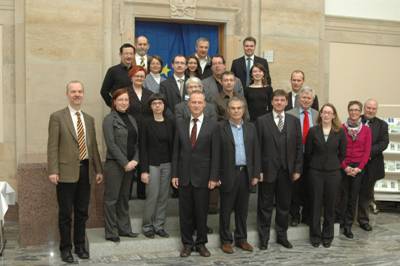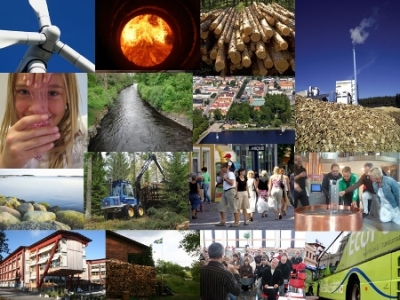Newsletter
- Issue VIII / November 2013
- Issue VII / June 2013
- Issue VI / February 2013
- Issue V / June 2012
- Issue IV / November 2011
- Issue III / July 2011
- Issue II / January 2011
-
Issue I / September 2010
- Editorial: Welcome note by Werner Sommer, representative of the Lead Partner
- A successful start for EnercitEE
- The sub-project priorities and the 1st Call for Proposals
- Regional kick-off events
- An introduction to Saxony
- An introduction to Smaland (Kalmar and Kronoberg)/Blekinge
- An introduction to Emilia-Romagna
- An introduction to Haute-Savoie
- An introduction to Crete
- An introduction to Lower Silesia
- EnercitEE: An overview
- Information and materials
Issue I / September 2010
Editorial: Welcome note by Werner Sommer, representative of the Lead Partner
For most people, the greatest challenge facing climate policy today is the protection of natural resources and the global climate. For this reason it has become necessary to use energy more efficiently and to place more importance on renewable sources within the energy mix. Local authorities play a key role in this process. The scope of their functions provides them with numerous opportunities to exert their influence on energy production and consumption.
Werner Sommer (standing) and next to him the Saxon State Minister for the Environment and Agriculture Frank Kupfer
This is why we want to provide the local authorities, who represent one of the key actors of the EnercitEE project, with the appropriate instruments to expand upon their potential for energy saving and to achieve not only ecological but also economical results, e.g. by relieving financial pressure on private households and boosting the regional economy. Another central target group are the citizens. Citizens need to get more aware of their important role in remarkably reducing CO2 emission. They need to understand the potentials of saving energy and how to improve the energy performance within their daily lives.
The regions that have agreed to participate include Smaland (Kalmar and Kronoberg)/ Blekinge (Sweden), Emilia-Romagna (Italy), Haute-Savoie (France), Crete (Greece) and Lower Silesia (Poland). The Lead Partner of the EnercitEE project is Saxony (Germany). Over the past couple of months, we have established a loyal and constructive cooperation and we look to the future with confidence. Each participating region has defined specific interests and focuses. However, all partners are united in their effort to strengthen the energy efficiency of local authorities and citizens and to contribute to greenhouse gas mitigation.
A project with six European partner regions requires a clear structure, detailing responsibilities and arrangements. The Steering Group, which consists of political representatives from the participating regions, is the decision-making body within EnercitEE. The decisions that have to be made are prepared by the Working Group, which consists of representatives from the energy agencies or other authorities that are involved. The Saxon State Office for Environment, Agriculture and Geology hosts the Mini-Programme Coordination Office. As Lead Partner, Saxony is responsible for the sound implementation of the entire project. We will keep the public up-to-date about the progress of the project through the press, our website www.enercitee.eu, and at various events.
Our challenge – meaning the challenge of all partners being involved in EnercitEE and its sub-projects – is to take a particular active role in promoting more energy efficiency. We will facilitate the knowledge exchange on a regional and local level. Moreover, we will transmit the identified successful measure and policies to national and European level. Last but not least, we want to learn from the experiences of others and to impart the expertise that we have gained ourselves.
I hope that the project structure ensures a successful implementation of EnercitEE and that the results of EnercitEE will help other stakeholders to consider and employ energy efficiency measures. Let us work together and join our forces to achieve the goals of EnercitEE and to endorse sustainability.
A successful start for EnercitEE
EnercitEE successfully launched at the beginning of the year. The partnership began with a productive kick-off meeting in March 2010. The Lead Partner, the Saxon State Ministry for the Environment and Agriculture, invited the EnercitEE regional partners to Dresden, Germany, to participate in the Working and Steering Group meetings.
EnercitEE Working and Steering Group at the kick-off meeting in Dresden/Germany
The representatives of the Working Group met for around three days. The meeting mainly focussed on presenting the reporting and controlling requirements, developing the work plan for the coming months, clarifying responsibilities, and finalising important project documents. The EnercitEE manual was presented and discussed. The partnership agreement was finalised and recommended for approval by the Steering Group.
Mr. Frank Kupfer, State Minister for the Environment and Agriculture, opened the Steering Group meeting. He welcomed the representatives of the regional partners and the Joint Technical Secretariat, and highlighted Saxony’s interest in exchanging experiences in the vast field of improving energy efficiency. He invited the partners to play a key role in the partnership and to actively shape the results of EnercitEE.
Over the following months, the Working Group and the Mini-Programme Coordination Office worked hard to get EnercitEE up and running on both a project and on a regional level. The regional managers heavily promoted EnercitEE within their regions. By June, all important documents had been approved, the partnership agreement signed, the corporate design including the logo developed, and – perfectly timed for the launch of the 1st Call for Proposals – the EnercitEE website was officially launched.
The Call for Proposals has been open since 14th June 2010 and will close soon. All sub-project proposals must be submitted by Friday 24th September 2010. The launch of the second Call for Proposals will be announced via the website. Further information for interested parties, as well as application requirements, can be found on the website under “Call”.
Exchanging experiences is an integral part of EnercitEE. Besides the ongoing identification of good practices, study visits and training sessions will provide an insight into the experiences of the partner regions.
The sub-project priorities and the 1st Call for Proposals
The 1st Call for Proposals for EnercitEE sub-projects is currently open. Applications can be submitted to the coordination office until 24th September 2010. Up to twelve sub-projects can be approved. The idea is to enable local and regional actors to jointly develop and implement ideas, and to exchange experiences in the field of energy efficiency. Projects must be jointly run by partners from at least three EnercitEE regions.
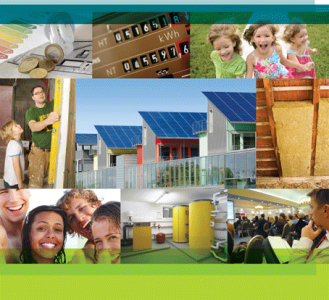
EnercitEE has twelve thematic sub-project priorities – six for citizens and six for local authorities – which propose a wide range of energy efficiency policies’ topics and needs.
Energy efficient citizens:
SP 1 Strategies of EE knowledge transfer (local energy advice
and networks)
SP 2 Awareness raising policies (EE competitions and games)
SP 3 Network strategies for EE citizens within local markets
(EE stakeholders within local markets)
SP 4 Promotion & exchange of citizens’ good practice examples
on EE
SP 5 Exchange of incentives and grant programmes for citizens
SP 6 Strategies and plans for EE mobility & transport
Energy efficient local authorities:
SP 7 EE training instruments for public authorities’ staff &
knowledge exchange
SP 8 Financing instruments as policies for local authorities
SP 9 Strategies to improve energy consumption in public buildings
SP 10 Regional climate policies for mitigation & adaptation –
exchange between local authorities’ staff
SP 11 Improving local energy policies – “job shadowing” in local
authorities
SP 12 New instruments for local energy planning and
implementation
The partner search for the development of joint sub-project proposals is facilitated through the search forum on the EnercitEE website. The EnercitEE Steering Group will select sub-projects from the sub-project proposals, preferably one for each priority, and will then recommend them for funding.
Sub-projects should be developed jointly on an interregional basis; they should also clearly contribute to the overall goals of EnercitEE; and should produce results that are in line with the thematic sub-project priorities. Exchanging experiences at policy level is a fundamental requirement in all sub-projects. Light pilot implementation is possible if a clear link to the improvement of policies and exchange of experience is ensured.
All requirements for sub-project applicants are published on the website www.enercitee.eu.
Regional kick-off events
Kick-off events were held in all EnercitEE partner regions. On the one hand, the aims of the meetings were to promote the EnercitEE project and to provide information about its structure, targets and activities. On the other hand, the meetings gave the opportunity to specify the priorities of the 1st Call for Proposals and the related sub-projects. Interest was high in all regions.
Local authorities highlighted the importance of the thematic priorities of EnercitEE. Their only concerns were regarding reporting and controlling. Furthermore, some institutions mentioned the challenge of pre-financing the activities, since, under INTERREG IVC, funds are only made available once activities have been reported and related expenses have been clarified. All regional managers and the MPCO responded to the questions raised and demonstrated how potential challenges could be overcome.
Kick-off in Saxony
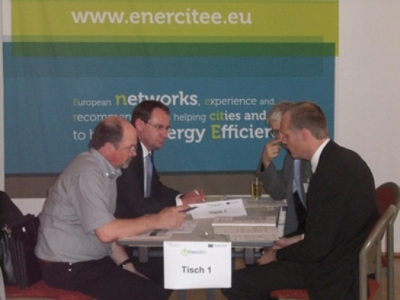
Saxony welcomed approximately 60 representatives from municipalities, universities, NGOs and energy agencies to the kick-off meeting in Dresden on 8th June 2010. Following the presentations, interested parties could present their sub-project ideas to the organisers. The challenges and opportunities facing applicants were discussed. The overall feedback after the event was very positive and increased Saxony’s expectations of carrying out a successful project.
Kick-off in Smaland (Kalmar and Kronoberg)/Blekinge
In June, the ESS held kick-off meetings in each of the three Swedish counties involved in the EnercitEE project. The project was presented by Mia Stavert and Hans Gulliksson from the ESS. Around 70 people participated in the three different meetings. Participants included municipalities from the counties of Blekinge, Kalmar and Kronoberg, as well as various other local and regional organisations interested in participating in sub-projects.
Kick-off in Emilia-Romagna

The Energy Policy Department of the Emilia-Romagna Region and ASTER organised an information day meeting on 15th July 2010. More than 30 participants took part (among others municipalities, universities and research centres, energy agencies, consulting companies and develop-ment agencies). The key issues of the first part of the day included the developing scenario of the regional energy policies towards the 20-20-20 goals, and the contribution that is to be expected from EnercitEE, as well as the regional priorities under this call. In the afternoon, potential applicants had the opportunity to present and discuss their project ideas with the EnercitEE regional managers.
Kick-off in Haute-Savoie

On 8th June 2010, the General Council of Haute-Savoie organised the regional kick-off meeting in Annecy, and welcomed 35 representatives from municipalities, universities, public services, associations and energy agencies, as well as local TV and press media that covered EnercitEE. A round table led by the General Council took place and participants exchanged ideas and questions about possible propositions and in which of the 12 sub-project priorities they could fit. The overall feedback after the event was positive and encouraging.
Kick-off in Crete

The Region of Crete held a kick-off and information meeting in Heraklion on 6 July 2010. The general impression from the meeting was very positive, as were the prospects for the participation to the 1st Call of Proposals for the “EnercitEE” sub-projects. The Region of Crete expects that this meeting will be a successful starting point for the efficient “EnercitEE” implementation in Crete.
Kick-off in Lower Silesia
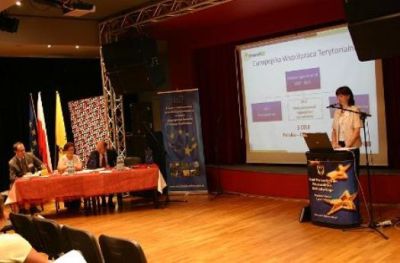
The Lower Silesian regional EnercitEE kick-off conference was held in Wrocław on 30th June 2010. Potential Sub-Project Participants from the region were invited (including local authorities, universities, agencies and NGOs) and presented with the project's background as well as with the principles of successful application. In addition, the priorities were discussed in detail and institutions demonstrated their interest by filling in specific surveys on sub-project participation.
An introduction to Saxony
Saxony is one of Germany’s 16 states. It has around 4.2 million inhabitants and a surface area of roughly 18,000 square kilometres. Saxony is a very vibrant region and the economy grew by 4.0% in 2006.
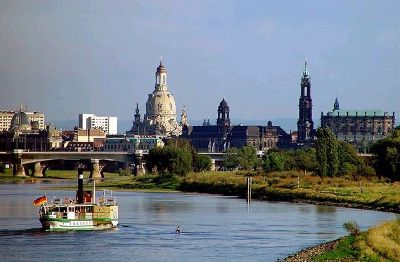
The river 'Elbe' with the skyline of the old part of the city Dresden
Since 2008, Saxony’s climate protection policies have been based on the Action Plan for Climate and Energy. This action plan contains almost 300 measures concerning climate protection, sustainable energy supply and adapting to climate change.
In order to implement these measures, the government of Saxony relies on its cooperation with relevant decision-makers and actors working in the field of economy, politics, administration, science and community. Activities primarily focus on informing and advising various target groups, offering financial incentives in the form of grant programmes, and on assuring quality control.
The INTERREG IVC project 'EnercitEE' contributes significantly to the implementation of measures that are included in the Action Plan for Climate and Energy. EnercitEE seeks to improve energy efficiency by focussing on two central target groups: private households and local authorities. The action plan also points to these key target groups with regards to energy saving. A lot of opportunities still remain in this area, for example in terms of building insulation, using more efficient machines and devices, and adopting a more energy-conscious approach.
An introduction to Smaland (Kalmar and Kronoberg)/Blekinge
The southeast of Sweden includes the three counties of Blekinge, Kalmar and Kronoberg. Within the region there are several ambitious energy objectives and policies at both the regional and local levels.
Both the County of Kalmar and the County of Kronoberg have adopted climate strategies. The counties of Kalmar and Kronoberg (southeast Sweden) have set themselves the target of being fossil-fuel-free regions by 2030/2050. The counties have implemented the strategies in close collaboration with ESS (climate and energy strategies). The County of Blekinge is on its way towards implementing a similar document.
A high proportion of renewable energy is already used for energy purposes in the counties in comparison to other regions (65%; the EU target is 20%). The knowledge acquired and experiences that have already been gained in the region can be transferred to project partners and other regions.
The Energy Agency for southeast Sweden plays an important role in the region. The company is jointly owned by an association, in which regional councils, counties and municipalities in Blekinge, Kalmar and Kronoberg are members. The Energy Agency's mission is to provide timely, objective and impartial information and knowledge about energy and transport issues.
The Energy Agency is working to initiate, coordinate and implement projects aimed at improving the energy efficiency and increased supply of renewable energy in all sectors of society. The agency works strategically and systematically to link the projects with the projects of the European and international market at the local and regional level.
An introduction to Emilia-Romagna
Emilia-Romagna is one of 20 Italian administrative regions and is one of the 15 macro sub-regions of the European Union with the highest economic development levels. With a surface area of more than 22,000 square kilometres and a population of over 4.3 million inhabitants, Emilia-Romagna is one of the largest and most highly populated regions in Italy. Emilia-Romagna has the fifth highest pro-capita income in Italy (ISTAT, 2009); this is due to the highly competitive industry and agriculture. 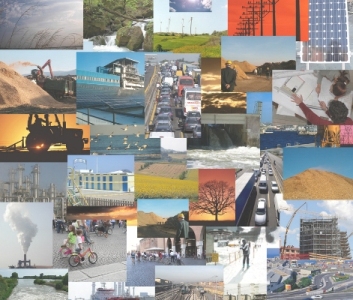
The energy sector plays a strategic role within the region; in fact Emilia-Romagna Region is very active in the development and implementation of energy policies. In 2004, in response to the poor results of national initiatives, the Emilia-Romagna region developed the Regional Energy Law (26/2004) and the Regional Energy Plan (REP), which was approved at the end of 2007.
The main focuses of the REP are in the field of energy efficiency and in the promotion of renewable energy sources (via interventions for the “green economy”; building, manufacturing and agro-food, and for the public sector). Particular attention is also devoted to innovation and new technologies as a key transversal regional policy. These interventions will be the main pillars of the new Regional Energy Three Annual Plan, as recently announced during the last conference on the REP, which was held in Bologna on 28th July.
Within the framework of EnercitEE, the Emilia-Romagna region’s Energy Policy Department will fund initiatives to provide local governments and public bodies with tools to promote the implementation of concrete energy efficiency measures, and, moreover, to acquire and exchange experiences for improving regional energy policy.
In addition, thanks to EnercitEE, the Energy Policy Department will work together with the regional consortium ASTER. It will have the opportunity to cooperate at an international level with other regions, as well as with energy agencies, to identify and exchange good practices and experiences in the field of energy efficiency for citizens and local authorities.
An introduction to Haute-Savoie
Haute-Savoie has 696,000 inhabitants and is a very dynamic region. The General Council of Haute-Savoie takes a proactive role in developing and implementing the environmental protection policies.

Through a programme of around 21 projects, Haute-Savoie is targeting energy consumption, reducing the use of resources, and reducing greenhouse gas emissions, and wants to increase energy efficiency as well as the development of renewable energy sources.
The Haute-Savoie Energy Plan was developed in 2008 to implement measures such as the shuttle system “Mobil'Alp” (also a European project) and the study of potential biogas or wood boilers to support collective heating. In line with these policies, the General Council decided to start the Haute-Savoie Climate Territorial Plan.
This plan is divided into two parts:
- The first part concerns the implementation of a mitigation and adaptation programme in the policies of the Council General and in its own management.
- The second is to facilitate a collective dynamism at the regional level, to involve communities, private sectors and civil society in the key issues concerning the struggle against climate change.
It is in this context that the General Council, wishing to assume its facilitation role in the departmental policies, agreed to be part of the European project EnercitEE. This project gives the opportunity to offer communities and the general public some ways of exchanging experiences, jointly developing strategies and implementing pilot measures.
An introduction to Crete
The population of the region of Crete is 601,131 residents (2001), which is around 5.5% of the total population of the country. The urban population amounts to 41% of the total population; the rural population amounts to 42%; while the semi-urban population remains constant and amounts to 17% of the total.

Crete is known as a “sun and sea” destination. It is the largest and most populous of the Greek islands and the fifth largest island in the Mediterranean Sea. Its main competitive advantages are the island’s climatic conditions, its archaeological sites (Knossos, Phaistos etc), monasteries, museums, places of historical interest, diverse natural resources from high mountains to long beaches and crystal blue waters, combined with a wide range of activities (cultural events, winter and sea sports, etc), as well as high-quality accommodation establishments ranging from all categories of hotels to self-catering units.
In December 1993, the region of Crete founded a Regional Energy Agency within the framework of implementing a regional energy policy and with the aim of establishing Crete as a preferential area for extensive applications of renewable energy sources in Europe.
In 2001, the European Commission awarded the region of Crete and its Regional Energy Agency with the first award for the Best Regional Renewable Energy Partnership (as part of the 2001 Campaign for Take-off Awards) for the existing RES plants in Crete, as well as their successful integrated programme: “Large Scale Deployment of Renewable Energy Sources in Crete”.
An introduction to Lower Silesia
Lower Silesia Voivodeship is one of the 16 voivodeships (provinces) into which Poland is currently divided. It lies in southwest Poland and corresponds roughly to the region of Lower Silesia (the northwest part of the historical and geographical region of Silesia). Its capital and largest city is Wrocław (640,000 inhabitants), which lies on the Odra (Oder) river.
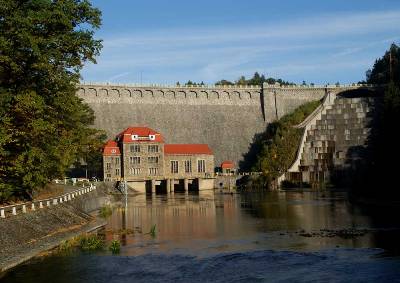
The regional authority of the Lower Silesian Voivodeship, with its elected assembly and its executive, deals with many aspects of regional policy, which are not reserved for the governmental administration (i.e.: public education, healthcare, development strategies, spatial planning and environment protection). The regional authority also manages the European Union funding.
There are some fine examples of good practices in Lower Silesia that can be used and developed in other regions e.g. “Centre for Renewable Energy Sources” in the Vocational Training Centre in Bielawa; “ABS Cluster”, which brings together energy industry businesses, research centres, large energy consumers and local authorities; Lower Silesian Centre for Advanced Technologies; and Centre of the Innovation’s Promotion in the Energy Industry.
The region has experience in geothermal waters and biomass application, as well as in solar and hydro energy. However, energy efficiency needs to be better promoted and equires more support in the region. Lower Silesia expects the project's activities to contribute to the creation of a coherent energy policy within the region.
EnercitEE: An overview
EnercitEE is organised as a mini-programme under INTERREG IVC, with seven partners from six regions.
The seven regional partners are:
- The Saxon State Ministry for the Environment and Agriculture – Lead Partner (Saxony, Germany)
- Energikontor Sydost – Energy Agency for Southeast Sweden (Smaland [Kalmar and Kronoberg] and Blekinge, Sweden)
- ASTER (Emilia-Romagna, Italy)
- Haute-Savoie local authorities (Haute-Savoie, France)
- Region of Crete (Region of Crete, Greece)
- Marshal's Office of Lower Silesian Voivodeship (Lower Silesia, Poland)
- Regional Council for Productive Activities, Commerce, Tourism (Emilia-Romagna, Italy)
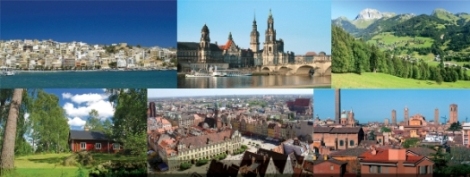
All partner regions have different policies, programmes of measures, experiences and expertise in the field of climate protection, energy efficiency and sustainable transport. The engagement of local authorities and citizens, the measures taken and the frameworks created to support sustainable and energy-conscious policies and lifestyles differ between the participating countries in terms of their extent and scope.
Therefore, the exchange of experience will be fundamental to this mini-programme.
The partners will compile policy instruments, examples of good practice and case studies from their regions. Furthermore, practical guidelines and policy recommendations produced within EnercitEE will provide valuable assistance for other European regions aiming to improve their energy performance and policies.
EnercitEE is organised into four components. The different parts are interlinked and tangible outputs will be produced. An experienced component manager will supervise the implementation and supervision of each component. For more information on the structure of EnercitEE please visit our website and read the EnercitEE Manual.
Information and materials
Several items have been produced and published for information purposes. All the materials are available for download from the EnercitEE website. They can either be used for your own use or to provide information to others.
The first Joint European Flyer in English is available and gives a short overview of EnercitEE, the sub-project priorities and the call for proposals. The flyer has been translated and distributed within the partner regions of EnercitEE.
Furthermore, two PowerPoint presentations offer a general overview on EnercitEE.
A poster exhibition has been developed and has begun its tour around the regions. If you would like to provide a venue for the exhibition please contact your regional manager.
All publications can be found on the website.

